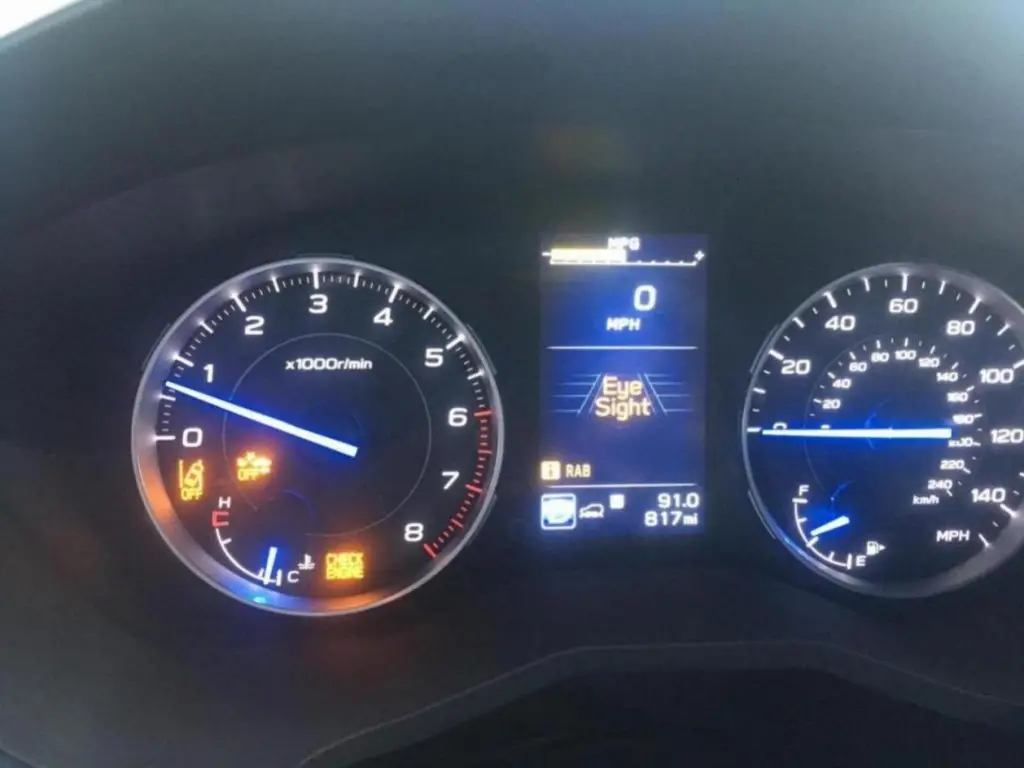Last Updated on February 5, 2024 by John Robinson
Several warning lights on your Subaru’s dashboard help you identify potential problems with your vehicle. The Check Engine Light is among these lights and is misunderstood by most drivers. Understanding what these lights mean in your car and navigating the situation is crucial in identifying engine problems early. Read on to learn more about the CEL and how to clear some of the standard Subaru check engine light codes.
What Does the Check Engine Light Mean on Your Subaru?
The check engine light on your Subaru can mean several things, but they all relate to the Engine Control Module or the Engine Control Unit. The ECM in all modern cars collects information from the different sensors and optimizes performance with the data collected. The system automatically makes the necessary adjustments if the ECM records a varying reading.
If the ECM detects an issue it cannot solve, it will turn on your vehicle’s check engine light. It would help to contact a professional mechanic to assist with identifying the trouble codes and fixing the problem.
Why Does Your Subaru Check Engine Light Turn On?
A Faulty EVAP System Fault
Most Subaru models come equipped with an evaporation system that captures gasoline fumes and send them back to the engine using a canister of activated charcoal. If there is an error in the evaporation canister, the check engine light will turn on. Solving this issue requires replacing the canister, although it will cost you a lot of money and time.
Mass Air Sensor
The check engine light on your Subaru might come on because of issues with the airflow in your engine. Modern vehicles rely on a computer to ensure everything runs smoothly, making them complex machines. The computer functions under a wide range of sensors, which cause the engine light to come on.
If you have a high-mileage vehicle and the engine lights come on, it could be a problem with your Mass Air Flow sensor. The sensor’s primary function is calculating the air entering your engine. The sensor might trip a code for something as minor as having an expired engine filter on your vehicle’s configuration.
Coolant Temperature Sensor
Temperature is another significant element that affects how well your Subaru engine runs. The temperature sensor helps alert you of an overheating engine while changing how your vehicle’s computer functions. If the Subaru Forester check engine light comes on, it could be because your engine is overheating and the computer cannot restore normal functioning.
Loose Gas Cap
A loose gas cap can result in problems with your EVAP system. An ideal gas cap should guarantee an air-tight seal on your engine. It will help to confirm any damage on the lid in case you dropped it earlier or the light came on after getting gas.
Ignition System Fault
Subaru Boxer engines are standard in all modern models of the brand. It is an exceptional engine with a unique advanced ignition system that guarantees precision with every fire. Several components in the ignition system can result in turning on the CEL, from ignition coils to the connecting cables.
How to Navigate the Check Engine Light on Your Subaru?
A Steady Check Engine Light
Although a steady check engine light indicates no immediate danger, it is not something to ignore. It is more likely that the issue will affect your vehicle’s cleanliness, performance, and efficiency. Schedule a service appointment for your Subaru as soon as possible to prevent it from worsening.
A Flashing Check Engine Light
If you observe the Subaru check engine light cruise flashing, your Subaru is in danger and requires immediate professional attention. The problem mainly relates to severe engine misfires, which dump unburned fuel into your car’s exhaust. It would help to turn your vehicle off and tow it to a licensed Subaru service center.
How to Reset the Subaru Check Engine Light?
Use a Scan Tool
A scan tool is the most practical way to identify DTC on your Subaru and reset the check engine light. You should connect the scan tool to the OBD-II scanner and turn the ignition switch on. Pressing the ‘read’ button will show you the error codes, and you can erase them.
Disconnect the Battery
Disconnecting the battery is also a technique you can use to reset the check engine light on your Subaru. Ensure you wait for some minutes after disconnecting the positive and negative cables to allow it to drain the remaining electricity. If the engine light still comes on after the process, it could indicate a functional problem with your engine and will require to be addressed.
How Do Subaru Check Engine Light Problems Present Themselves?
Before the Subaru Outback check engine light comes on, there are several symptoms you may have observed. These symptoms include;
- Rough running
- Poor throttle response
- Excessive smoke from the exhaust
- Lack of power
- Engine overheats
- Engine misfires
It would help to keep your engine turned off after identifying these symptoms until you can find a mechanic to have it checked. Another symptom worth mentioning is the Subaru Outback check engine light flashing cruise control traction control. If there are no symptoms and the check engine light is on, it could be an issue with your evaporative emission control system or gas cap.
Conclusion
Understanding what the check engine light means on your Subaru will help you keep the car in good shape and avoid unwarranted breakdowns. Before taking the proper corrective measures, we recommend visiting a professional mechanic for an accurate diagnosis.


